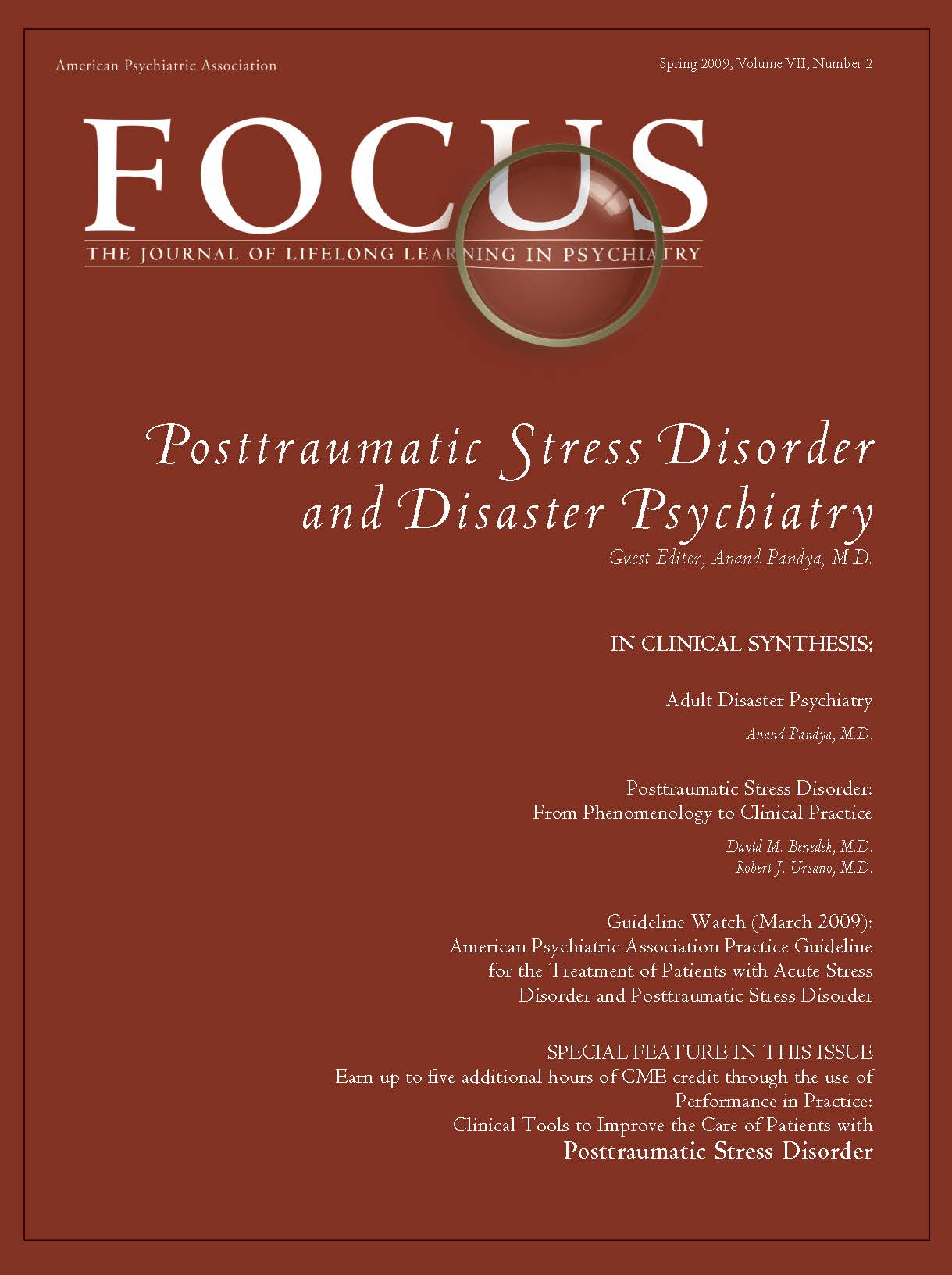Adult Disaster Psychiatry
Abstract
Although most individuals are resilient, individuals who are exposed to trauma in mass casualty events have an increased rate of Posttraumatic Stress Disorder (PTSD), Major Depressive Disorder (MDD), other anxiety disorders such as Panic Disorder and Generalized Anxiety Disorder, and medically unexplained somatic symptoms. Risk factors for psychopathology include female gender, minority ethnic status, prior psychopathology, prior traumas, duration and severity of exposure as well as physical proximity to the disaster. Immediate interventions after a disaster should include attending to basic needs such as physical health, housing and reuniting families. The role of debriefings as an early intervention remains controversial. Later interventions include cognitive and behavioral therapy (CBT) and the use of selective serotonin reuptake inhibitors for those who meet criteria for PTSD. Further research is required to determine whether Eye Movement Desensitization and Reprocessing offers any additional benefits beyond those offered by CBT.



